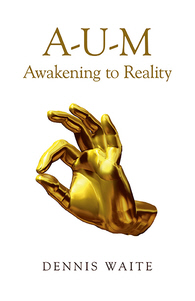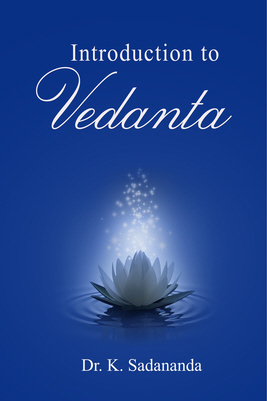Q: I am reading your book ” Confusions in Advaita Vedanta”.
I am from India, born in the Smarta Brahmin tradition of The revered Adi Shankara.
The purport of Adi Shankara as repeatedly explained by you is that no pramana or meditation except shabda pramana, teaching of scripture expounded by qualified teacher can give jnana. And this understanding happens in the process of listening once. Repetitions don’t help.
This caused both enthusiasm and later negativity in me. I have heard scriptures being expounded by Swami Dayananda, Swami Paramarthananda, Swami Brahmananda, Swami Parthasarathy, Sri Gangolli (translator of Swami Satchidananendra) etc. But no understanding or Jnana has resulted.
Am I doomed? Or Does it mean I was not qualified enough? More yoga sadhana required for purifying my mind? Of course there can be no doubt that the teachers were qualified. So fault is mine.
Tag Archives: Chinmayananda
mANDUkya upaniShad Part 3
Mantra 2
*** Read Part 2 ***
सर्वं ह्येतद् ब्रह्मायमात्मा ब्रह्म सोऽयमात्मा चतुष्पात् || 2 ||
sarvaM hyetad brahmAyamAtmA brahma so.ayamAtmA chatuShpAt
sarvaM etad – Everything here
hi – (is)certainly
brahma – brahman.
ayam AtmA – This Atman
brahma – (is) brahman.
saH ayam AtmA – This very Atman
chatuShpad (= chatur + pAda) – (has) four aspects.
Absolutely everything is brahman. This Atman is brahman and has four aspects.
In the first mantra, OM was said to be everything. (How this is so will be analyzed in mantras 8 – 12.) The Upanishad now asks what is the nature of this Self, Atman; mantras 2 – 7 make this enquiry.
Continue readingQ.509 Direct Path vs Traditional – Pt. 2
Part 2 – Free Will
Q: We talked earlier about the difference between the direct path and the traditional path.
I was looking through the free will section in your book Back to the Truth and I found this quotation by Franics Lucille:
We are entirely conditioned; therefore, there is no free will. It appears as though we exercise free choice, but in fact we are only reacting like automatons, running through the same patterns of our bio-sociological heritage without respite, leading invariably to the same old reactions, like a vending machine dispensing soft drinks in a train station. As individuals, our freedom is illusory, with the exception of the freedom which is ours at each moment to stop taking ourselves for separate individuals and thus putting an end to our ignorance and our suffering.
On the other hand, at the level of our deepest being, everything flows out of our freedom. Every thought, every perception takes birth because we want it to. We cannot understand this at the level of thought, but we can experience it. When we are totally open to the unknown, the personal entity is absent; then we realize that the tangible and intelligible universe arises out of this openness in the eternal present. We want, create and are at every moment everything in the unity of awareness. (Ref. 8)
[Waite, Dennis. Back To The Truth: 5000 Years Of Advaita (p. 76). NBN_Mobi_Kindle. Kindle Edition.]
Continue readingGaudapada and World Appearance
(Extract from the book)
 What exactly happens when a person is enlightened or ‘gains mokSha’? A popular, although somewhat incomprehensible, belief is that the world somehow ‘disappears’; that, for the j~nAnI, there simply is no longer any duality. Quite how the j~nAnI (apparently) continues to eat, drink and converse is not adequately explained by those who hold such a view. But Gaudapada approaches it from a different and even more dramatic angle.
What exactly happens when a person is enlightened or ‘gains mokSha’? A popular, although somewhat incomprehensible, belief is that the world somehow ‘disappears’; that, for the j~nAnI, there simply is no longer any duality. Quite how the j~nAnI (apparently) continues to eat, drink and converse is not adequately explained by those who hold such a view. But Gaudapada approaches it from a different and even more dramatic angle.
Prior to my enlightenment, I make the mistake of identifying myself with the body-mind, believing myself to be a separate entity. This is the result of my Self-ignorance – not realizing that I am the unlimited Atman. Gaudapada says that this ignorance is beginningless (anAdi) (K1.16). At the dawn of Self-knowledge, I recognize that I am not the waker, dreamer or deep-sleeper but the non-dual turIya.
As to whether or not the world then disappears, Gaudapada effectively asks: how can it disappear when it didn’t exist to begin with? “If the visible world actually existed, there is no doubt that it might stop (i.e. disappear) (as soon as j~nAna was gained). (But) this (apparent) duality is merely mAyA (and) the absolute truth is non-dual.” (K1.17) Continue reading
The Disappearing World
The recent post by Ramesam – Ignorance goes, but mAyA remains? – continues to draw discussion. It has now reached nearly 50 comments! Ramesam’s last comment kindly referred to Gaudapada’s kArikA 1.17 and, looking this up in my book ‘A-U-M: Awakening to Reality’, I found that I had put together a very useful post to the Advaitin E-group back in 2009. Accordingly, it seems appropriate to post this here and, since it is longer than a simple comment, I am starting a new thread.
*****
A favorite topic on the Advaitin discussion group (http://groups.yahoo.com/group/Advaitin/) (where I am one of the moderators) has been what exactly happens when a person is enlightened or ‘gains mokSha’. A popular, although somewhat incomprehensible, belief is that the world somehow ‘disappears’; that, for the j~nAnI, there simply is no longer any duality. Quite how the j~nAnI (apparently) continues to eat, drink and converse is not adequately explained by those who hold such a view. But Gaudapada approaches it from a different and even more dramatic angle. Continue reading
Vedanta Introduction – Sadananda

The book by Acharya Sadananda which was published in July is available free in Amazon Kindle format on Oct 13th, 14th and 15th (3 days only). An opportunity not to be missed!
Introduction to Vedanta

Just to announce that the book by Acharya Sadananda which was published last month will be available free in Amazon Kindle format on Aug 16 – 17th (2 days only). An opportunity not to be missed!
The Chinmaya Mission, Sw. Dayananda, and scholarly disquisitions
Excerpted (with apologies) from:
www.academia.edu/25991692/Paradigms_and_Styles_of_Advaita_Mission_An_Experiment_in_Interpretation
“I have a message to the West as Buddha had a message to the East” – Vivekananda.
“Once more the world must be conquered by India. This is the dream of my life, and I wish that each one of you who hear me today will have the same dream in your minds, and stop not until you have realised the dream.”
Ramakrishna Mission never transcended ethnicity in any absolute sense; instead, its distinctive teachings and structure brought it into complex negotiations with the various cultures it encountered, in India and in the West… Śaṅkara the Missionary. Continue reading
Acharya Sadananda new book
 Introduction to Vedanta
Introduction to Vedanta
Bad news: Some readers may have noticed that the series ‘Introduction to Vedanta’ by Dr. K. Sadananda disappeared from my website a few days ago.
Good news: The series has now been published by Sethu R Rathinam in a quality, 218 page paperback and as an E-book on Amazon Kindle.
From my foreword to the book:
‘An Introduction to Vedanta’ was originally serialized on the Advaitin discussion group where it was justifiably well-received. As they say in the advertising media: ‘it does what it says on the box.’ It covers all of the material needed to introduce the subject to a new seeker, clarifying aspects that could otherwise prove difficult or even dampen enthusiasm. He never talks down to his listeners but speaks directly to them using everyday examples that resonate immediately. No doubt he benefits from having been taught directly by Swami Chinmayananda and more recently by many other teachers including Swami Tejomayananda and Swami Paramarthananda, but his scientific background also brings naturally clear reasoning ability to his analysis of the subject with the result that he seems able to explain the most difficult topics.
Anyone looking for an overview of the essential teaching of Advaita could not do better than to read this Introduction.
And I consider myself fully qualified to recommend the book since I editied it myself!
The paperback or Ebook may be purchased now from Amazon:
Buy from Amazon US (book) ….. $10.00 Buy from Amazon US (Kindle) ….. $5.00
Buy from Amazon UK (book) ….. £8.00 Buy from Amazon UK (Kindle) ….. £3.82
Q. 368 – vAsanA-s
Q: Do vAsanA-s belong to the causal body or the subtle body?
In the subtle body camp I got a response from one of Swami Dayananda’s senior students saying that the causal body is pure ignorance with no attributes and that vAsanA-s “definitely belong to the subtle body”. In addition, from my own quick review of some of Shankara’s basic works I can find no passage that says the causal body is anything but “avidyA” and find no mention of the term “ vAsanA-s ” anywhere.
In the causal body camp I have James Schwartz and multiple pieces of Chinmayananda literature. In fact I have seen them equate vAsanA-s to avidyA by pointing out that avidyA and vAsanA-s are both caused by the guNa-s.
Can you help with this one? What is going on here? Btw, as an interesting side note, in Swami Dayananda’s extensive Gita course-books the word “ vAsanA-s ” does not appear once.
Answers from Ramesam, Ted, Martin and Dennis. Continue reading
